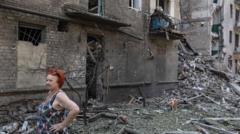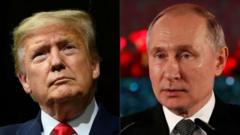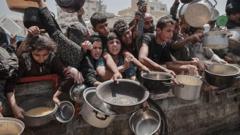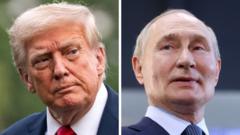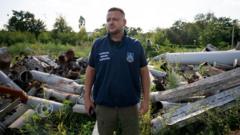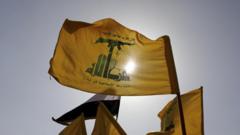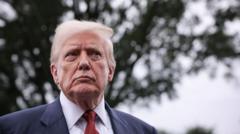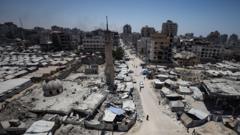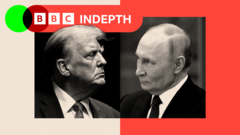As Syria's new leadership integrates foreign fighters into the military, the implications of their presence reveal contrasting narratives in international and local perspectives.
Foreign Fighters in Post-Civil War Syria: Allies or Threats?

Foreign Fighters in Post-Civil War Syria: Allies or Threats?
A Complex Landscape of Support and Contention Amid Syria's Reconstruction
In a post-civil war Syria, the role of foreign fighters presents a paradox for the country's newly established government and its foreign relations. Many of these combatants, who once aligned with rebel factions to unseat the Assad regime, are now viewed as either valued allies by the new leadership or potential security risks by international observers, particularly the United States.
The Syrian civil war, which culminated in 2011, witnessed an influx of thousands of foreign fighters from diverse backgrounds, unified in their opposition to Assad's dictatorship. With the fall of recent administrations, many among these fighters, who had fought alongside groups like Hayat Tahrir al-Sham (HTS) led by President Ahmed al-Shara, find themselves contemplating their future in a new military framework as Syrian forces aim for renewal and stabilization.
While the Syrian government appears to welcome these fighters as staunch supporters of the revolution, the U.S. narrative often classifies them under a more ominous light, associating them with extremist factions like the Islamic State. This discord creates a fraught political landscape, where the U.S. has expressed intentions to either expel or diminish the influence of foreign fighters in Syria, complicating relations that the Assad regime strives to improve.
As the government rebuilds its military forces, it is reportedly integrating these foreign fighters. However, this effort could alienate potential allies, given the ongoing pressures from the Trump administration, which seeks to regulate their roles to maintain regional security. Al-Shara now faces the daunting task of aligning the conflicting demands of his international counterparts with the loyalty of fighters who have become integral to the rebellion's success.
Navigating this delicate and multifaceted situation highlights the challenges of reconciling local needs with broader geopolitical considerations as Syria emerges from years of conflict, with the struggle for stability still at the forefront of the agenda.
The Syrian civil war, which culminated in 2011, witnessed an influx of thousands of foreign fighters from diverse backgrounds, unified in their opposition to Assad's dictatorship. With the fall of recent administrations, many among these fighters, who had fought alongside groups like Hayat Tahrir al-Sham (HTS) led by President Ahmed al-Shara, find themselves contemplating their future in a new military framework as Syrian forces aim for renewal and stabilization.
While the Syrian government appears to welcome these fighters as staunch supporters of the revolution, the U.S. narrative often classifies them under a more ominous light, associating them with extremist factions like the Islamic State. This discord creates a fraught political landscape, where the U.S. has expressed intentions to either expel or diminish the influence of foreign fighters in Syria, complicating relations that the Assad regime strives to improve.
As the government rebuilds its military forces, it is reportedly integrating these foreign fighters. However, this effort could alienate potential allies, given the ongoing pressures from the Trump administration, which seeks to regulate their roles to maintain regional security. Al-Shara now faces the daunting task of aligning the conflicting demands of his international counterparts with the loyalty of fighters who have become integral to the rebellion's success.
Navigating this delicate and multifaceted situation highlights the challenges of reconciling local needs with broader geopolitical considerations as Syria emerges from years of conflict, with the struggle for stability still at the forefront of the agenda.


